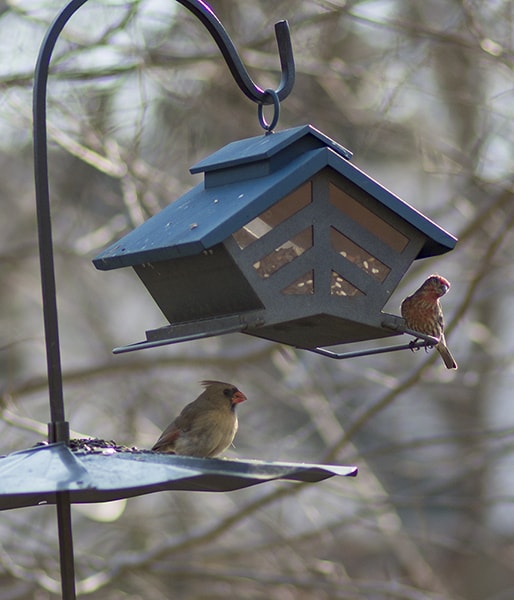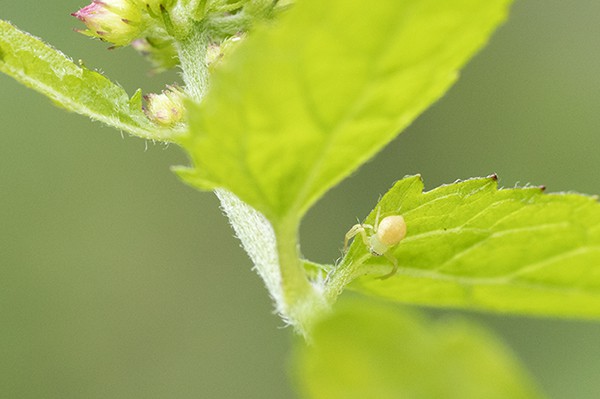PLANT NATIVES TO FEED THE BIRDS
If you are troubled about dwindling bird populations and you’d like to help our feathery friends, you need to know a few things like this: It takes more than a bit of bird seed in the winter months. Take chickadees, for example. They don’t eat seeds in the springtime when they are making and raising babies, they eat only caterpillars. So where have all the caterpillars gone?
SUBURBAN LANDSCAPING STARVES THE BIRDS
Unfortunately, our own behavior is causing the loss of habitat for caterpillars, leading to a loss of chickadees, which eat more caterpillars than you might imagine. Think thousands of caterpillars for a single clutch of baby chickadees. But native caterpillars need native species for their own food. And thanks to our habit of landscaping with non-native ornamental plants the caterpillars are in shorter supply and so too become the chickadees.
If you want to attract and support bird populations all year round, start planting native species in your yard. Chickadees won’t be the only beneficiaries.

North American bird populations have nose-dived for a variety of reasons. A big one, experts tell us, is habitat loss. Suburbia has created a huge negative impact by landscaping around our homes with lovely but unproductive non-native ornamentals such as azalea, privet, crepe myrtle, Japanese maple, boxwood, barberry, forsythia, heavenly bamboo, English ivy, pachysandra … plants that are native to other countries, not ours. People don’t realize that most insects cannot feed on these commonly used alien exotics because they do not have an evolutionary tie to the plants. If the insects can’t feed on your plants then the birds can’t feed on the insects. And it’s these insects that provide the food for our indigenous birds.
THE LANDSCAPE-BIRD POPULATION CONNECTION
Dr. Doug Tallamy, at a speaking engagement in Northern Virginia this past February, put it bluntly, “There are millions of people who put out bird food all winter long and during the summer they starve the birds by the way they landscape because they don’t see the connection.”

cruising along on American elderberry (Sambucus canadensis).
ATTRACT A CATERPILLAR—FEED A CHICKADEE
“We all have chickadees at our feeders so we think they eat seeds. And they do eat seeds, all winter long. But when they are making babies, they don’t eat seeds, they eat caterpillars. It’s not because caterpillars are the only things around them. They could eat grasshoppers or crickets or mayflies or syrphid flies or snipe flies or Cicadellidae—leafhoppers—or click beetles or caddisflies or sow bugs or centipedes or millipedes or spiders or all the other things that are out there when they’re breeding—but they don’t. They only eat caterpillars. And that means that if you don’t have enough caterpillars in your yard, if you don’t have caterpillars period, you’re certainly not going to have chickadees.”
Tallamy’s research, completed on his own native-laden property in Delaware, found that it takes between 6,000 to 9,000 caterpillars to make one clutch of chickadees. “Now sometimes they will bring back an adult caterpillar, a moth, but that’s actually fairly rare,” he said. “It’s typically the caterpillar itself.” While showing photographs of momma and poppa chickadees feeding their babies caterpillar after wriggly caterpillar (and sometimes a whole beak full of them), Tallamy explained that caterpillars are soft, easily swallowed and won’t rip the throats of the nestlings.

ATTRACT A SPIDER—FEED A HUMMINGBIRD
Tallamy then brought up one of everyone’s favorite birds. “Hummingbirds like and need nectar but 80% of their diet is insects and spiders. So that’s something that most people don’t know. If you don’t have those insects and spiders in your yard, it doesn’t matter how many hummingbird feeders you have, you are not going to be able to support hummingbirds. And that is true for 96% of the terrestrial birds in North America.”
LANDSCAPE WITH NATIVES TO FEED THE BIRDS
There are as many reasons to plant native species around your home as there are natives. If you are a person who loves watching birds (and who doesn’t?), adding productive plants to your garden is the ultimate way to help nurture their habitat and natural food source. Landscaping with native plants instead of alien plants will attract our native bugs, and that’s the point. Feed the insects and in turn feed the birds.
Doug Tallamy’s website
